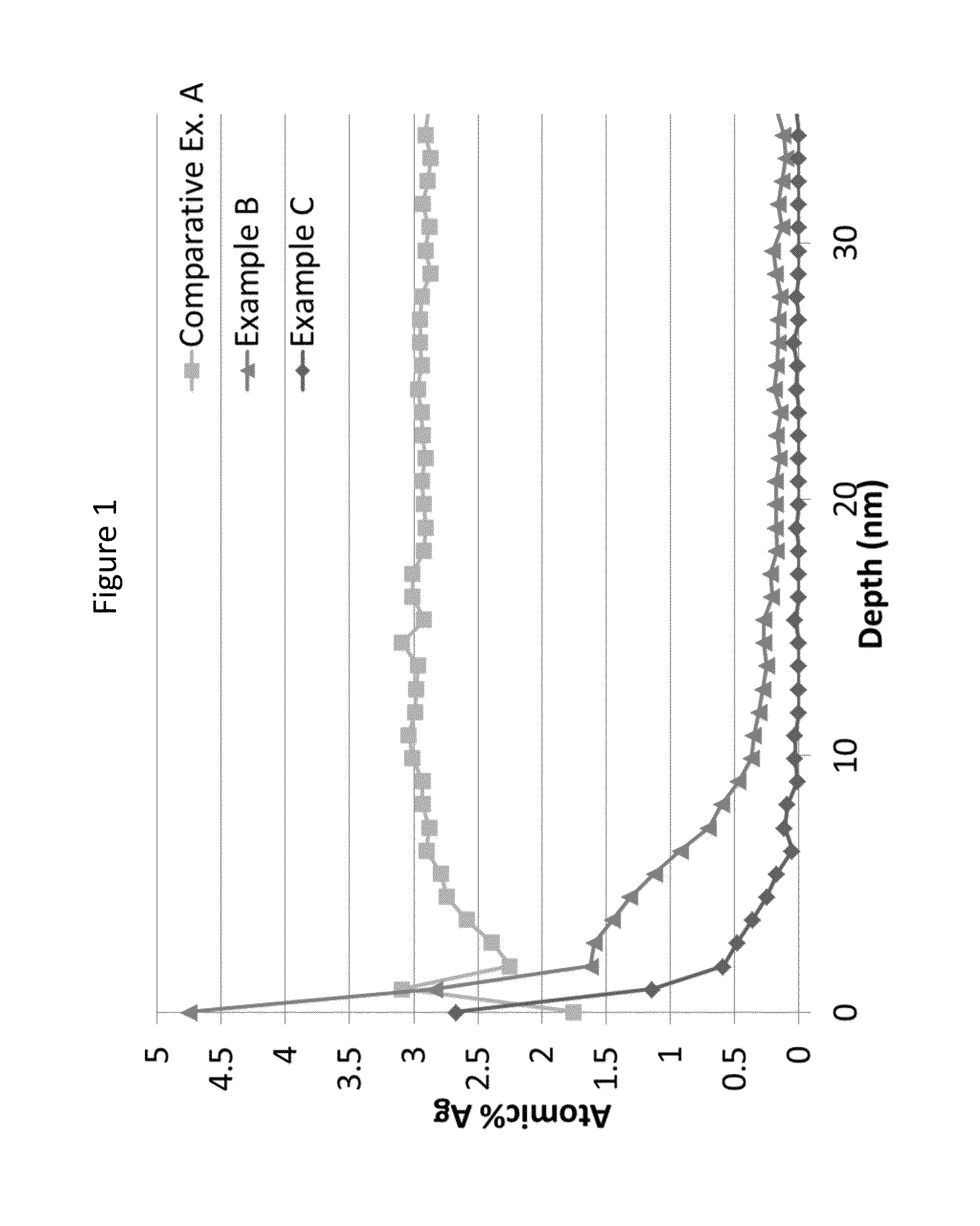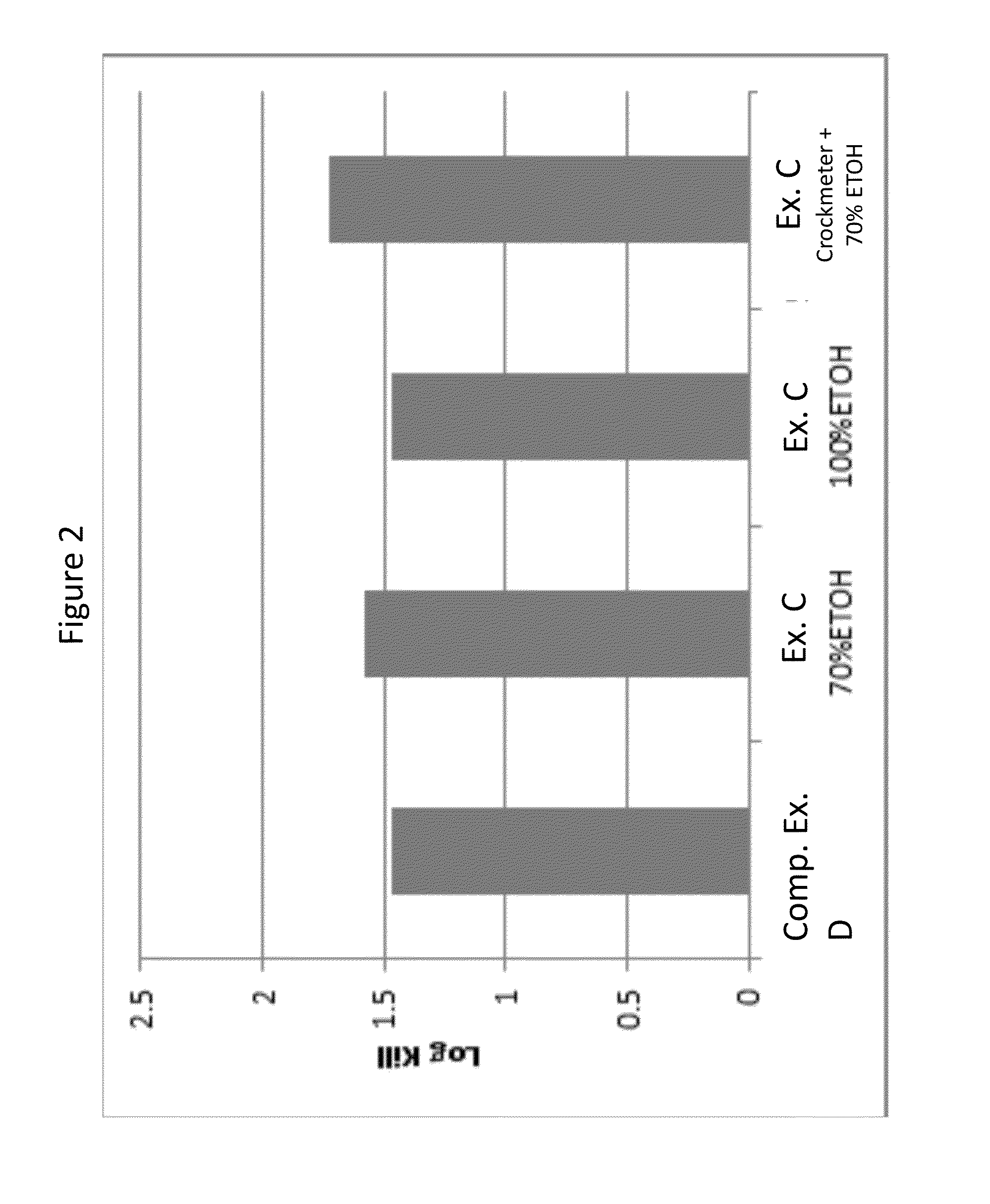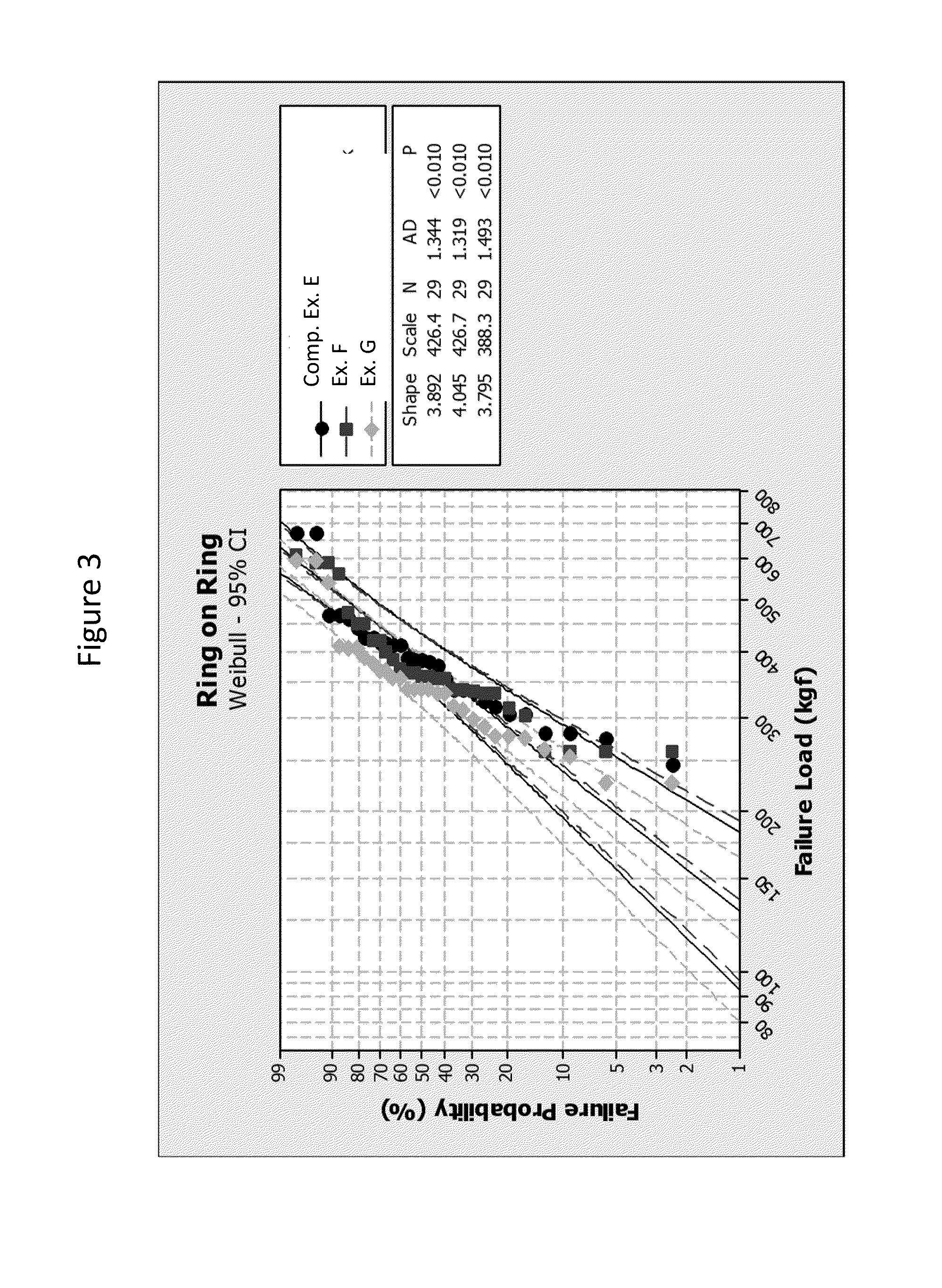Antimicrobial Articles and Methods of Making and Using Same
a technology of antimicrobial glass and ceramics, applied in the field can solve the problems of poor optical or aesthetic properties, impracticality of antimicrobial glass articles, and high manufacturing cost, and achieve the effect of improving antimicrobial efficacy
- Summary
- Abstract
- Description
- Claims
- Application Information
AI Technical Summary
Benefits of technology
Problems solved by technology
Method used
Image
Examples
examples
[0093]Comparative Example A and Examples B-C were prepared to evaluate the antimicrobial agent-containing region depth profile. Each of Comparative Examples A and Examples B-C were prepared using the same alkali aluminosilicate glass substrate. The substrate was subjected to chemical ion exchange by immersing the substrate in a 100% KNO3 molten salt bath at a temperature of 420° C. for 2 hours and 15 minutes. The substrate had a surface compressive stress of about 990 MPa and a depth of compressive stress layer of 45 μm. The glass substrates had a composition of about 58 mol % silica, 16.5 mol % alumina, 17 mol % Na2O, 3 mol % MgO and 6 mol % P2O5.
[0094]An antimicrobial agent-containing region was formed in Comparative Example A by immersing the substrate in a molten salt bath including 50% AgNO3 and 50% KNO3 and having a temperature of 350° C., for 2 minutes. An antimicrobial agent-containing region was formed in Example B by contacting the substrate with an aqueous solution includ...
PUM
| Property | Measurement | Unit |
|---|---|---|
| Temperature | aaaaa | aaaaa |
| Temperature | aaaaa | aaaaa |
| Temperature | aaaaa | aaaaa |
Abstract
Description
Claims
Application Information
 Login to View More
Login to View More - R&D
- Intellectual Property
- Life Sciences
- Materials
- Tech Scout
- Unparalleled Data Quality
- Higher Quality Content
- 60% Fewer Hallucinations
Browse by: Latest US Patents, China's latest patents, Technical Efficacy Thesaurus, Application Domain, Technology Topic, Popular Technical Reports.
© 2025 PatSnap. All rights reserved.Legal|Privacy policy|Modern Slavery Act Transparency Statement|Sitemap|About US| Contact US: help@patsnap.com



